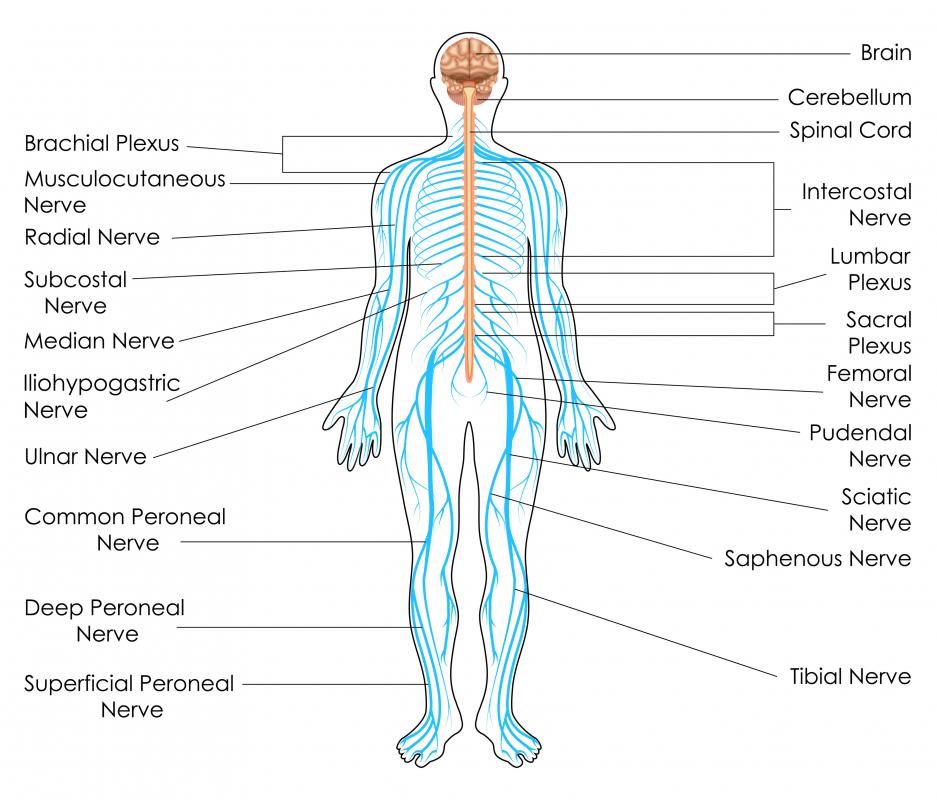At WiseGEEK, we're committed to delivering accurate, trustworthy information. Our expert-authored content is rigorously fact-checked and sourced from credible authorities. Discover how we uphold the highest standards in providing you with reliable knowledge.
What does the Obturator Nerve Control?
The obturator nerve is a vessel of the peripheral nervous system that penetrates the medial compartment of the thigh, also known as the inner thigh. Originating from the lumbar plexus, a web of nerves exiting the lumbar spine in the lower back, it extends through the front of the hip and reaches the upper inner thigh, where it exchanges sensory information between the central nervous system and the skin found here. The obturator nerve also transmits motor impulses between the brain and the muscles found here, known as the adductors, that make contraction of these muscles possible.
Much like an electrical cord sends an electrical impulse from a power source to the device to which it connects, the obturator nerve transmits electrical signals between the brain and the thigh. This nerve, however, can carry signals in two directions. It does so by way of chains of nerve cells known as neurons that can send signals in a single direction depending on the neuron type. Chains of afferent neurons deliver sensory information like temperature from the body up the spinal cord and to the brain, which then interprets this information and determines a response. Similar chains of efferent neurons carry motor signals from the brain back out to the muscles, telling them to produce movement.

The obturator nerve, then, receives sensory information from receptors in the skin of the inner thigh, such as whether water that contacts the skin is hot or cold, or how painful is an injury to the area. It transmits this information in the form of an electrical impulse that enters the spine via the nerves exiting the second, third, and fourth lumbar vertebrae. Once inside the spinal cord, which along with the brain is a part of the central nervous system, this signal is delivered upward by the afferent neurons until it reaches the brain and is routed to the area of the brain that is responsible for coordinating that specific response—i.e. to pain or temperature.

Likewise, the efferent neurons carry signals from the brain to the muscles of the inner thigh that are innervated by the obturator nerve: the adductor magnus, adductor longus, adductor brevis, obturator externus, pectineus, and gracilis. These are called motor signals because they are the electrical impulses that are responsible for producing movement, with the nerve fibers plugging into the muscle tissue. It should be noted that the brain does not send these impulses to the muscles of the inner thigh in response to sensory information received from the inner thigh area, as afferent and efferent signals occur independently of one another. Rather, motor signals often are voluntary, as in deciding to take a step forward. As the muscles of the inner thigh produce the movement of adduction, or bringing the legs together, the brain may call upon them to contract during a motion like a jumping jack, sending the required signal to the muscles along the obturator nerve.
AS FEATURED ON:
AS FEATURED ON:














Discuss this Article
Post your comments